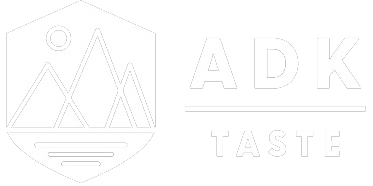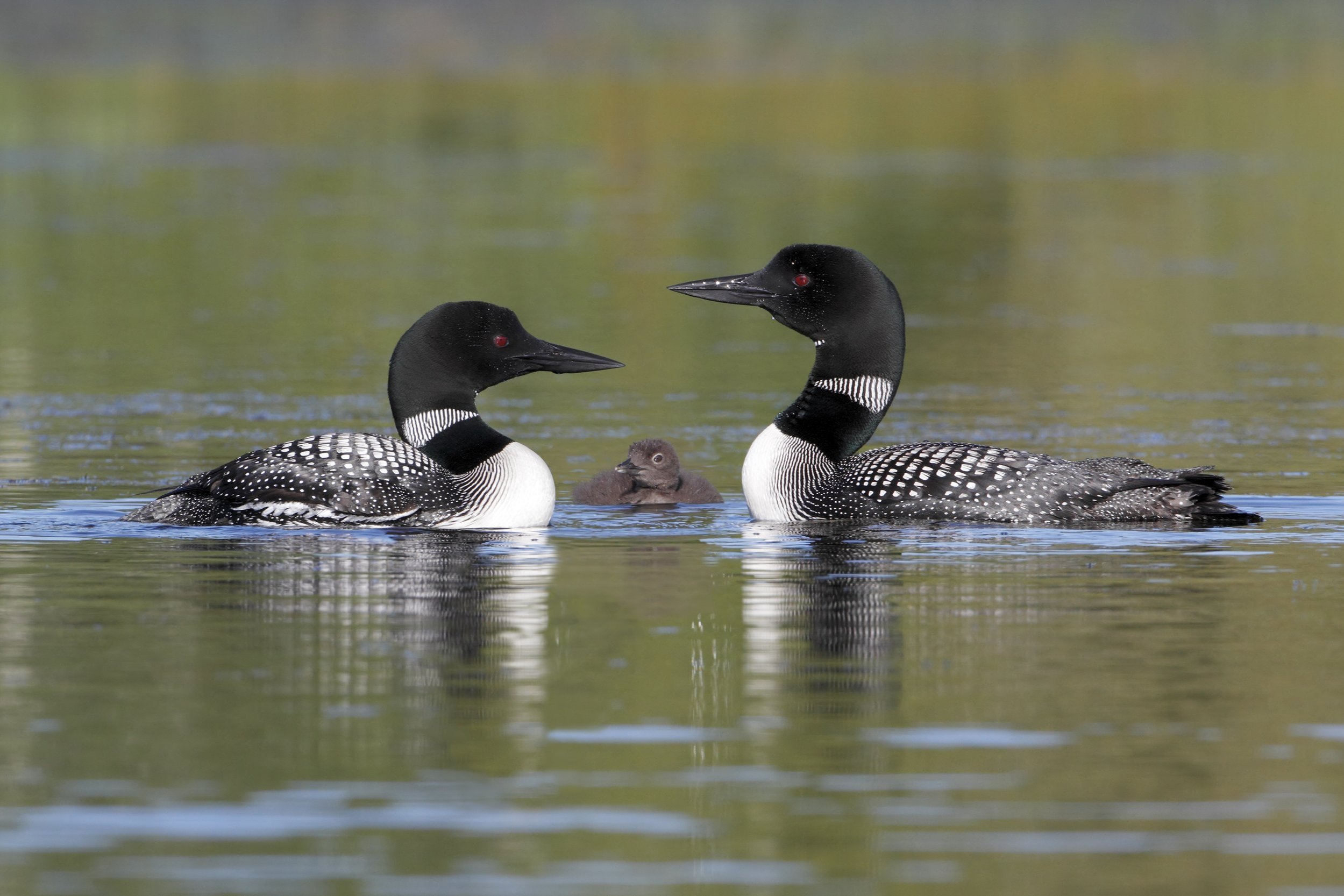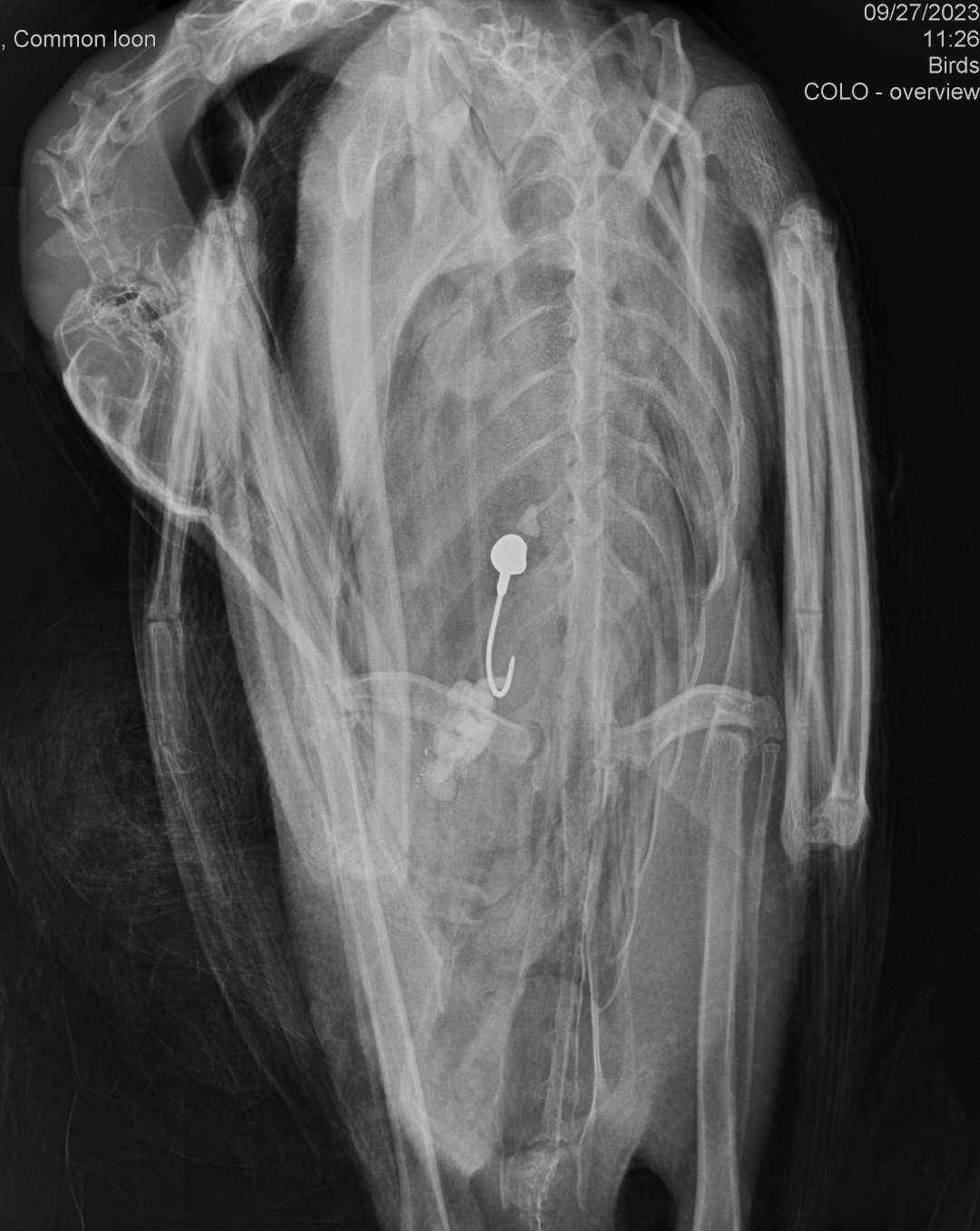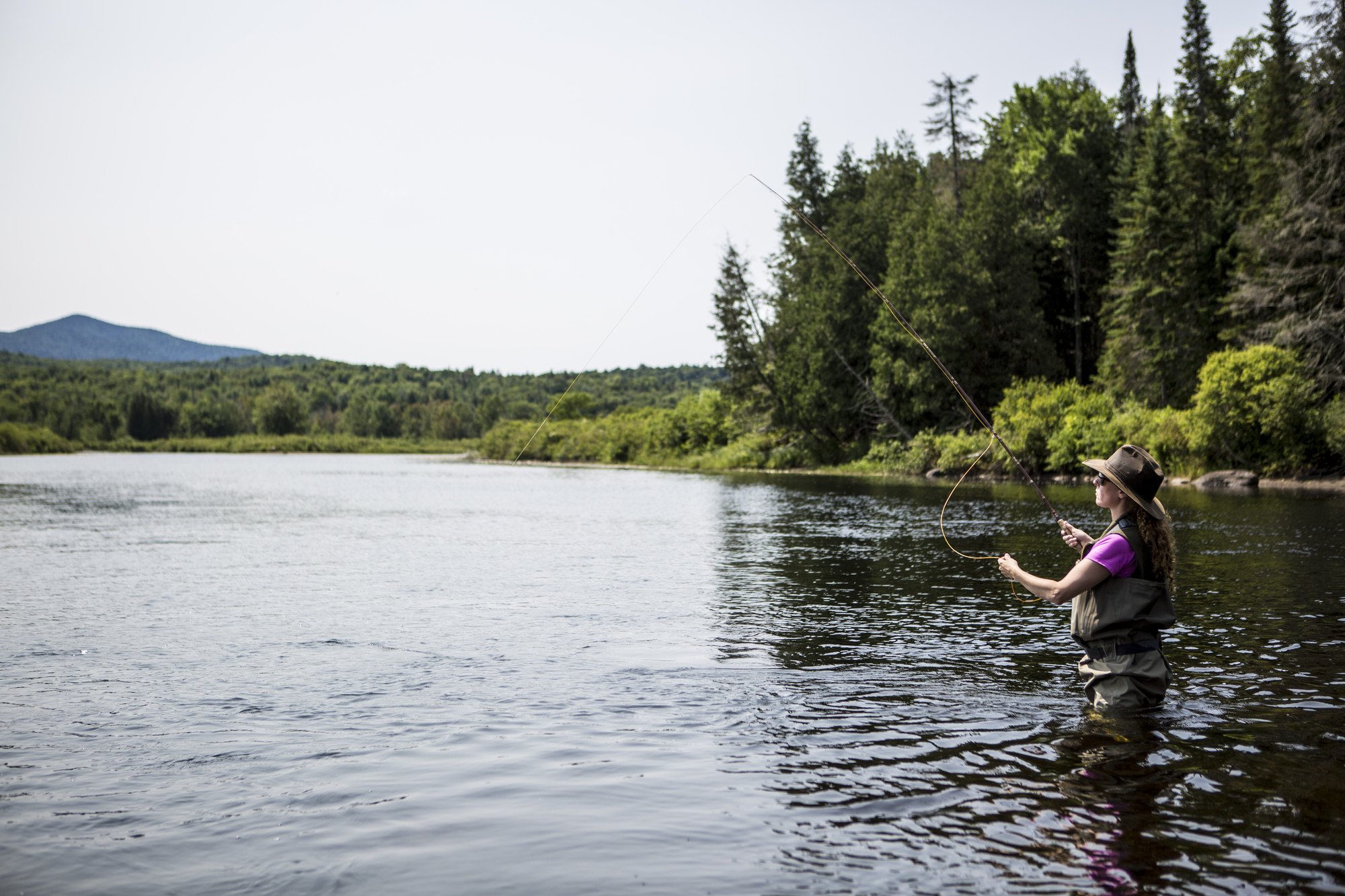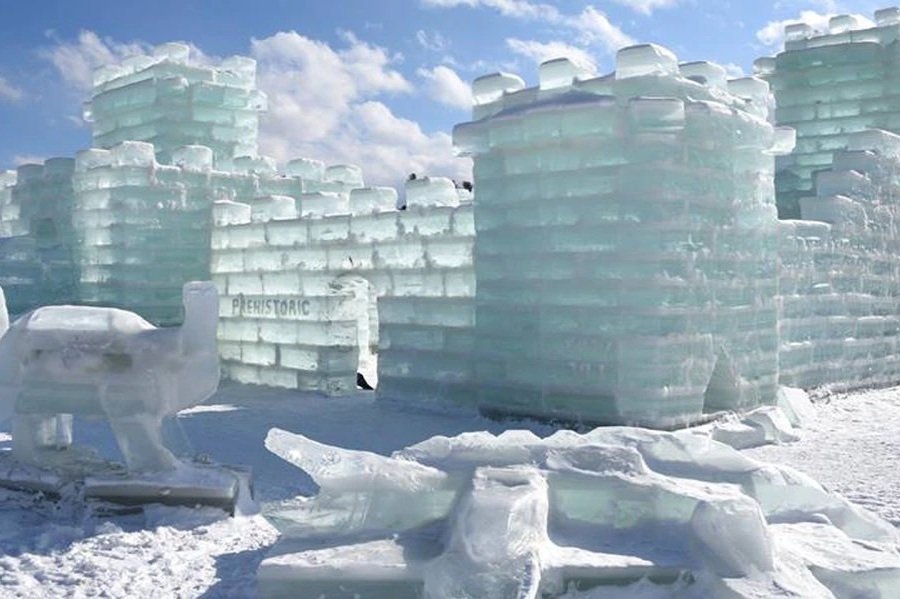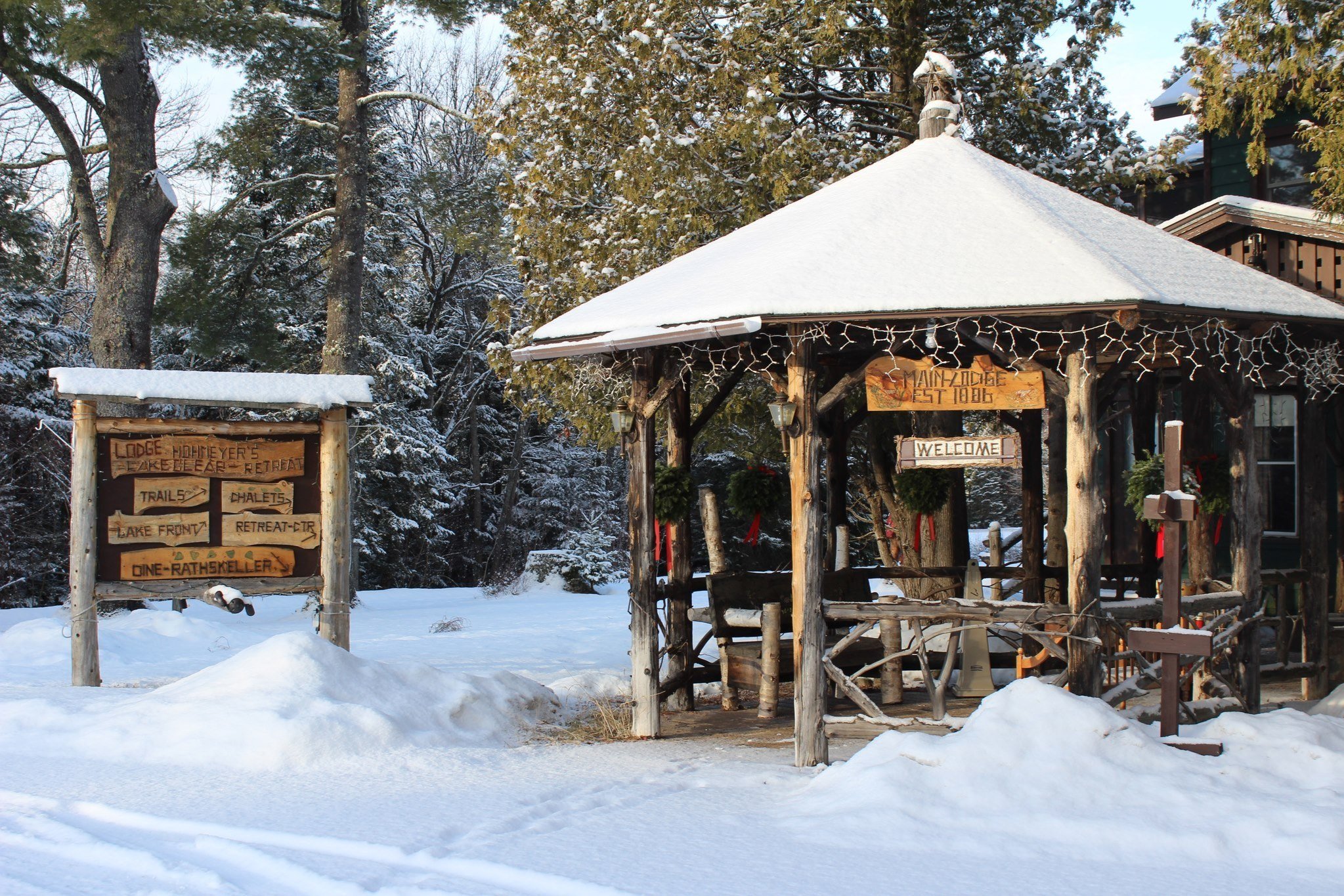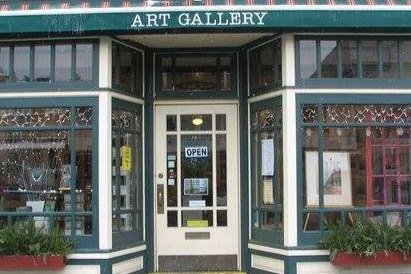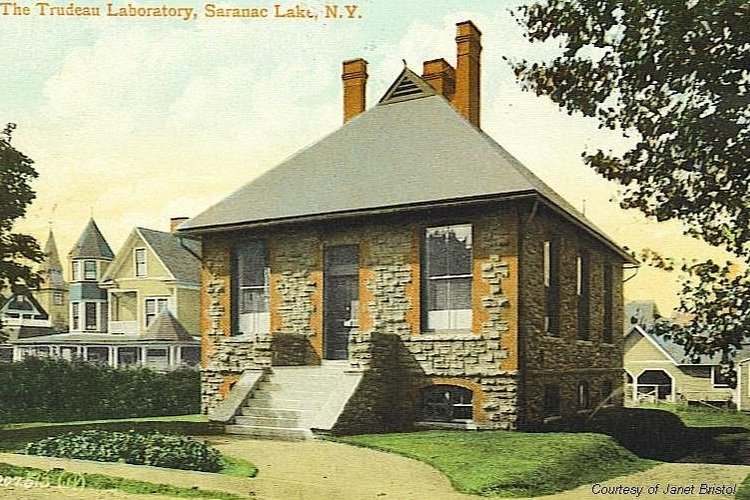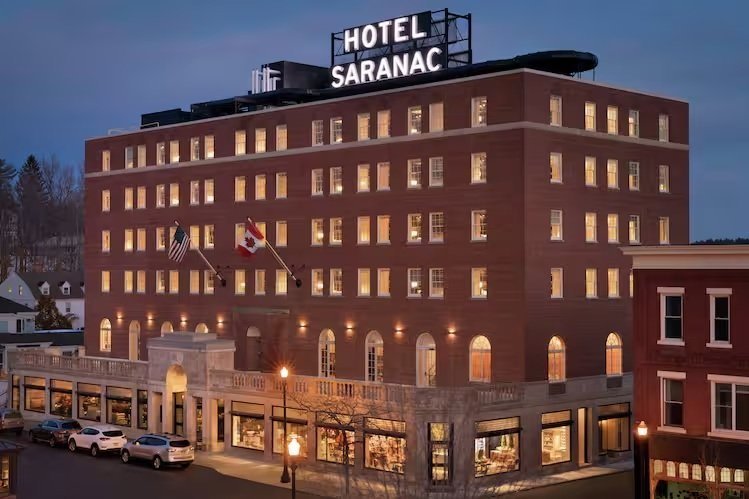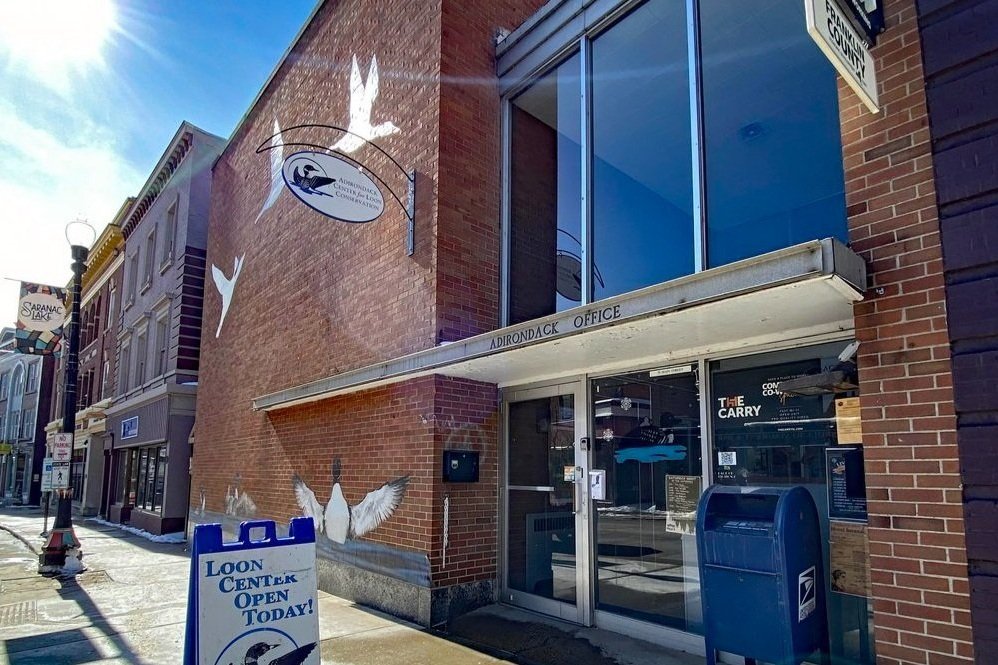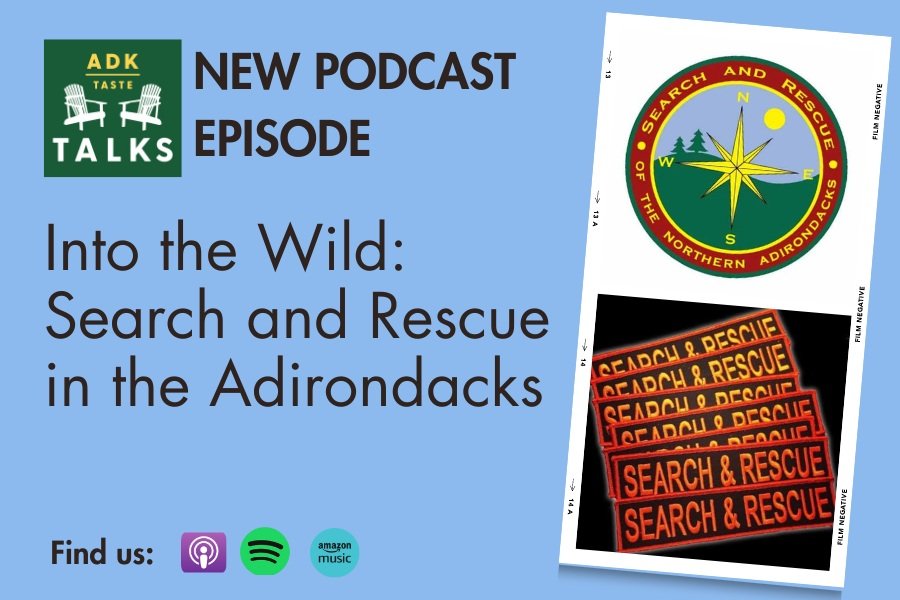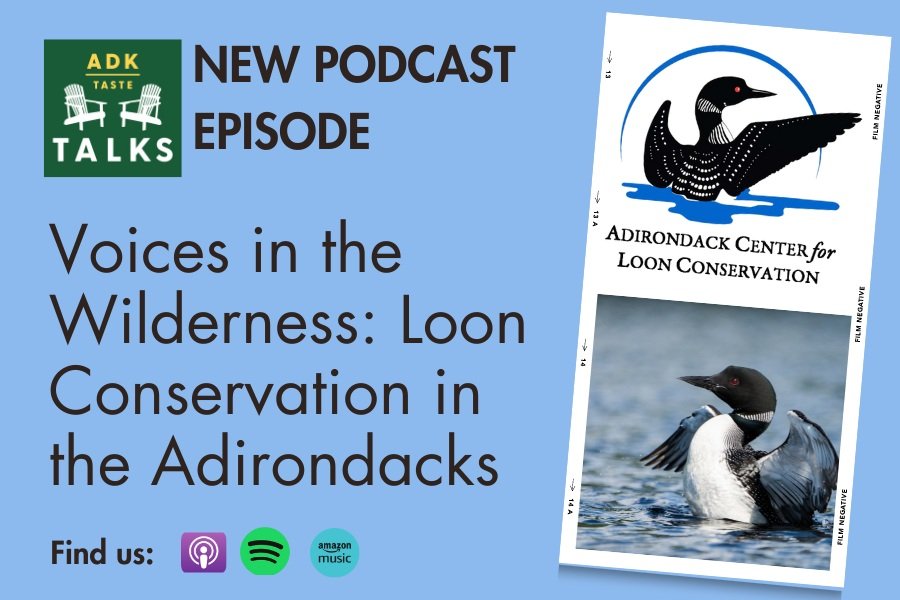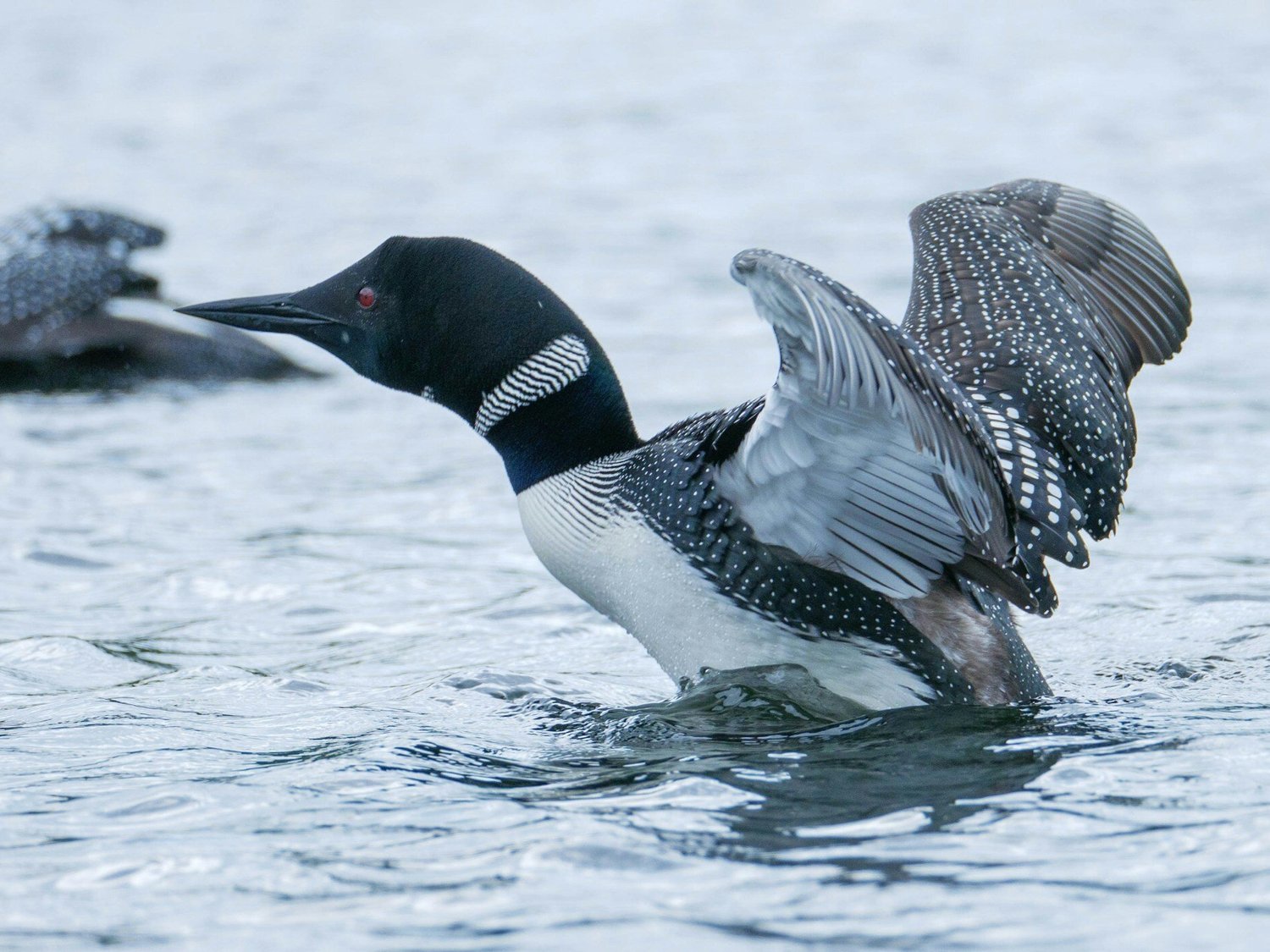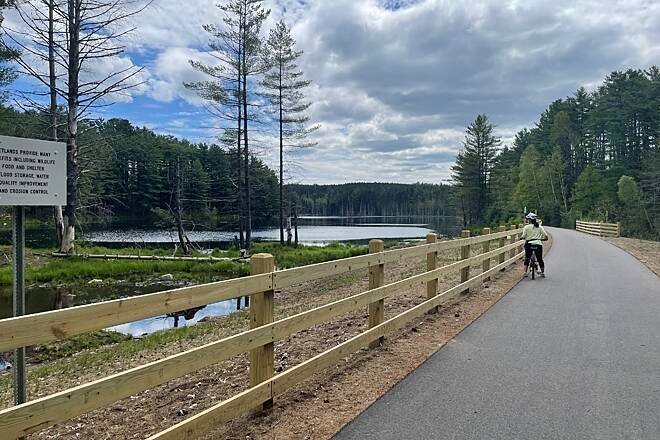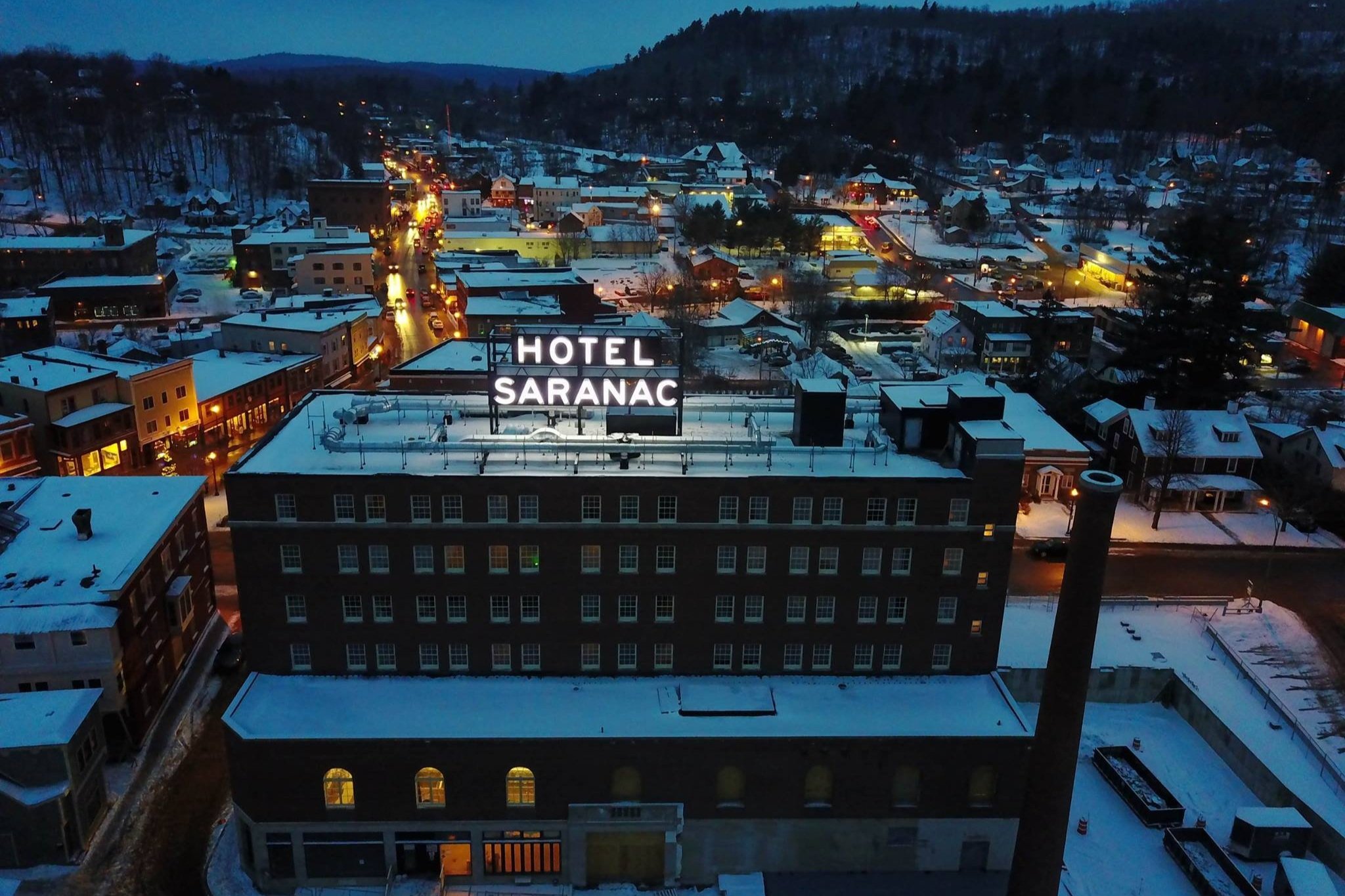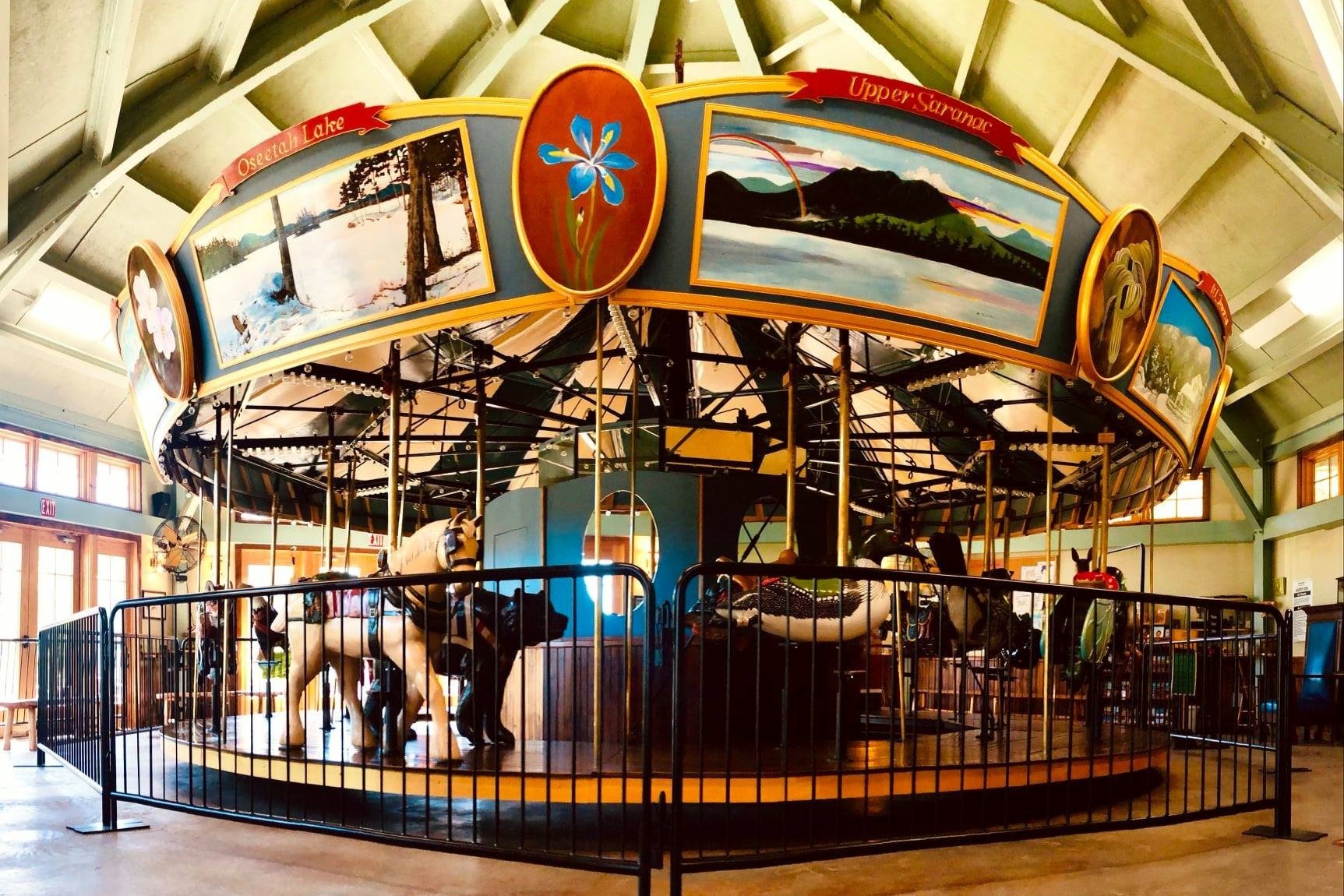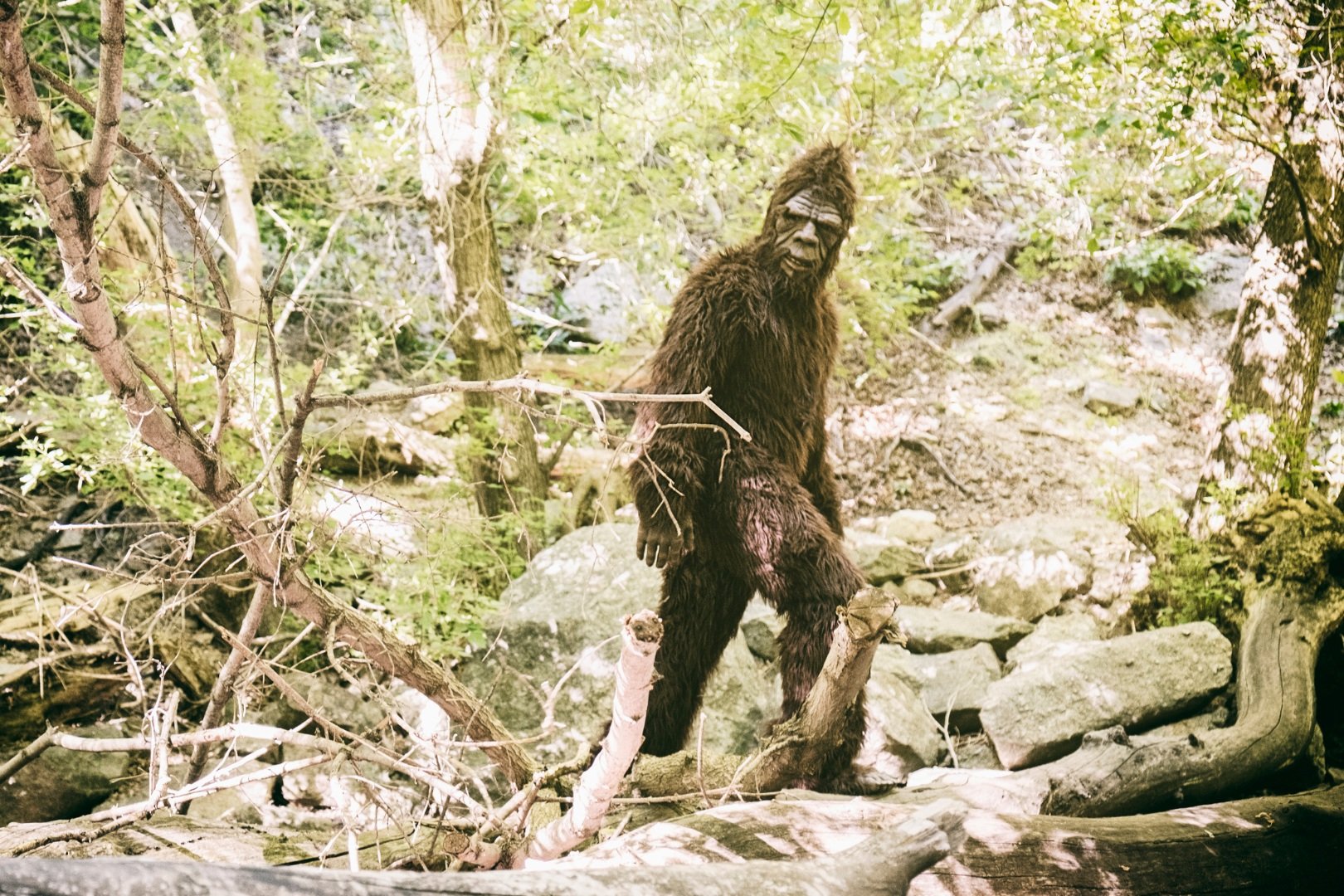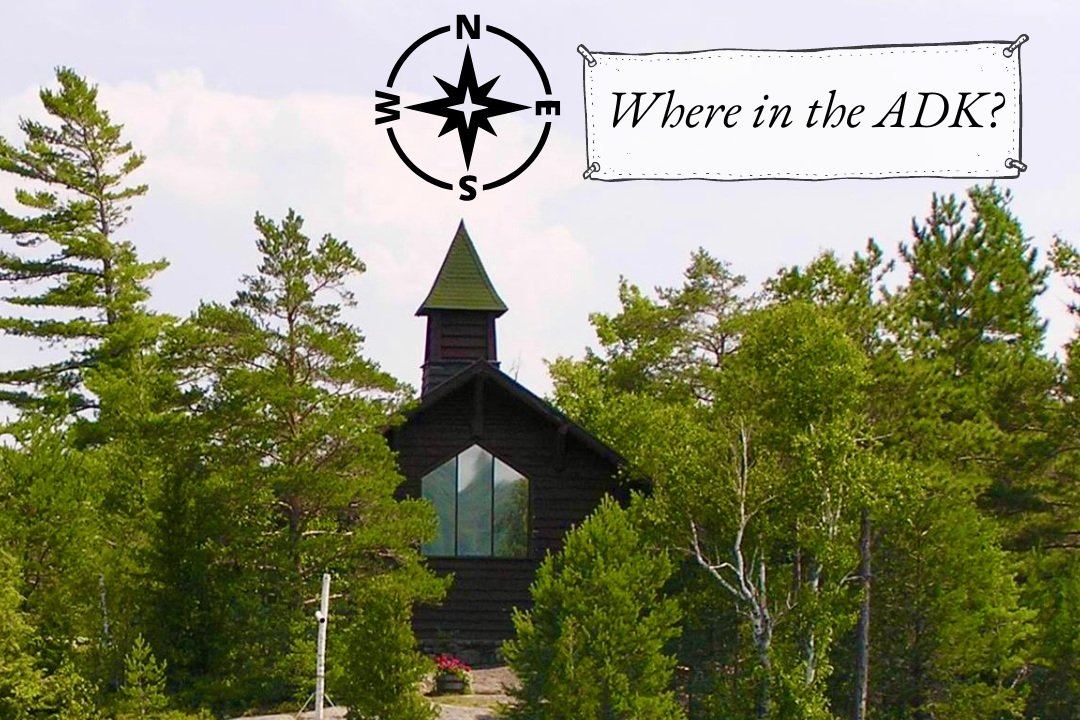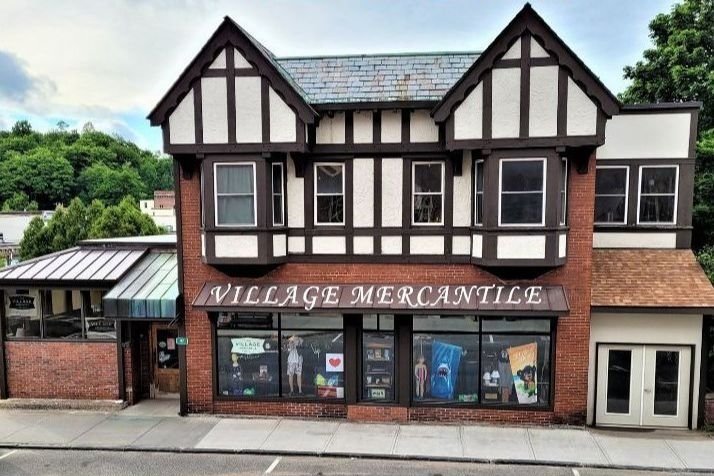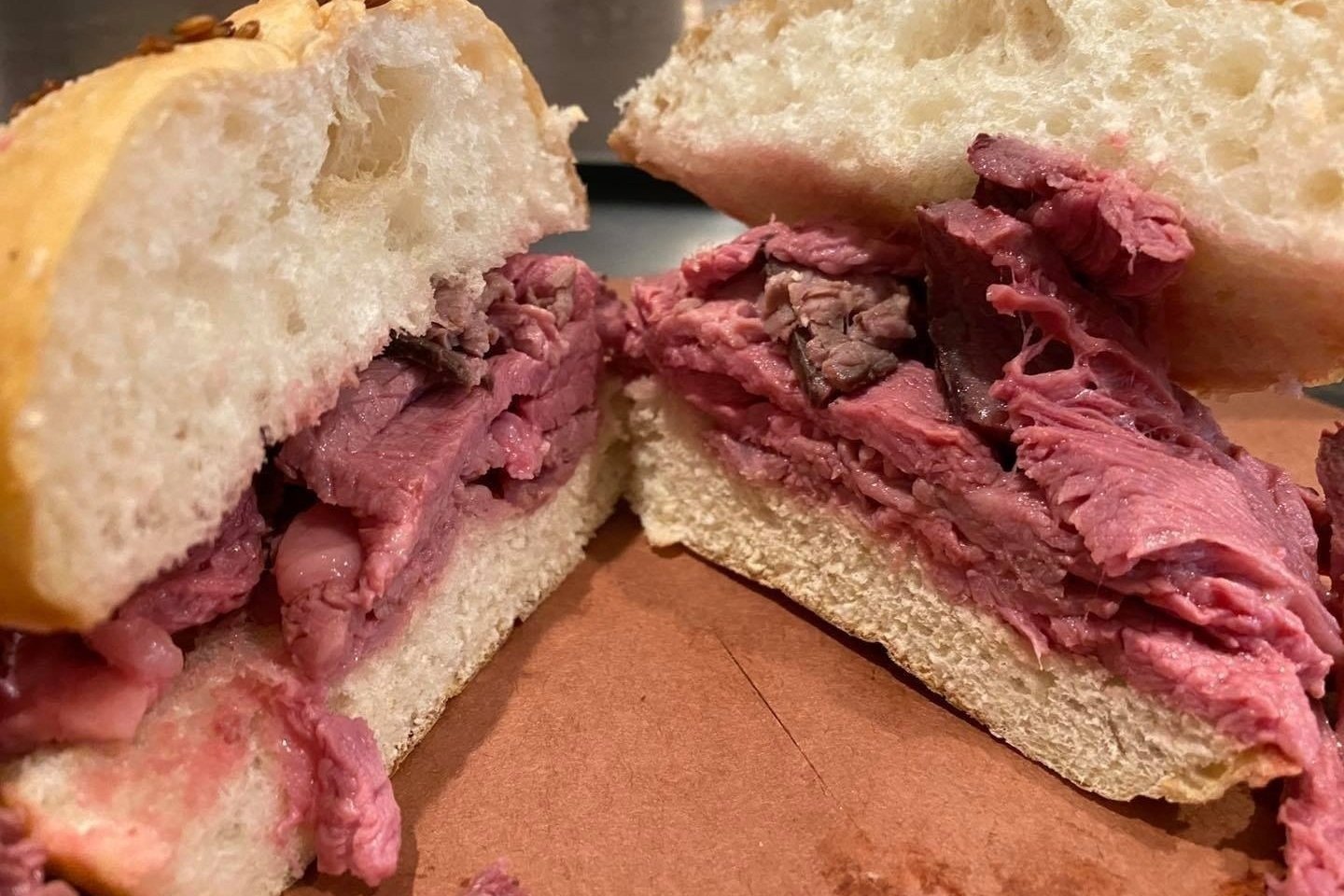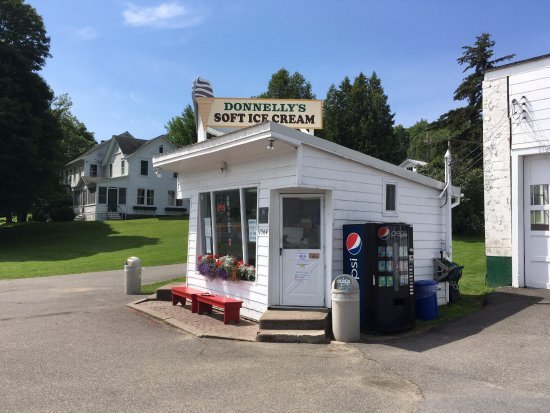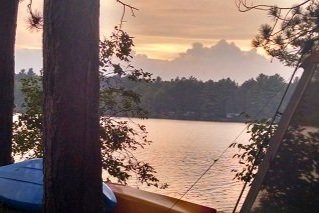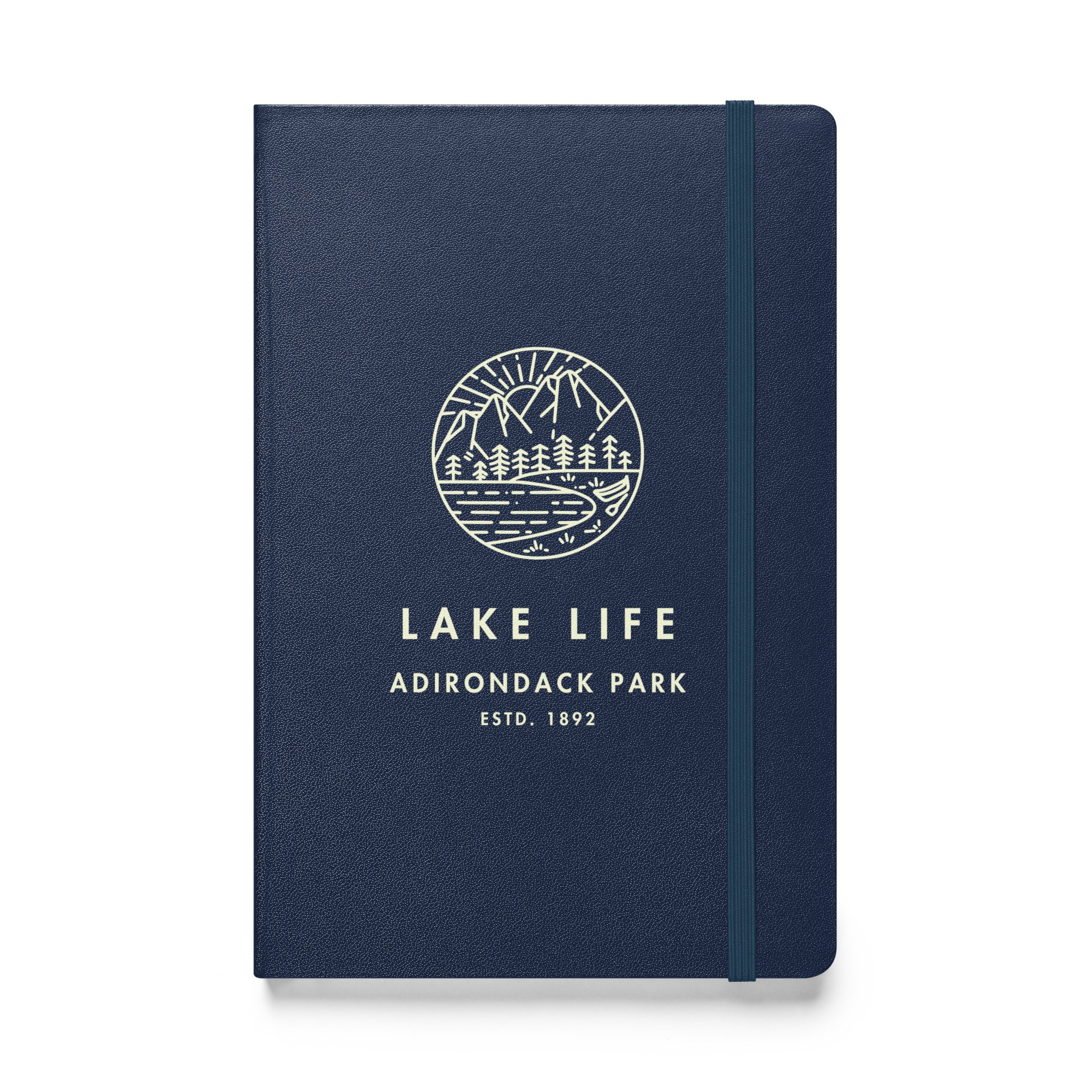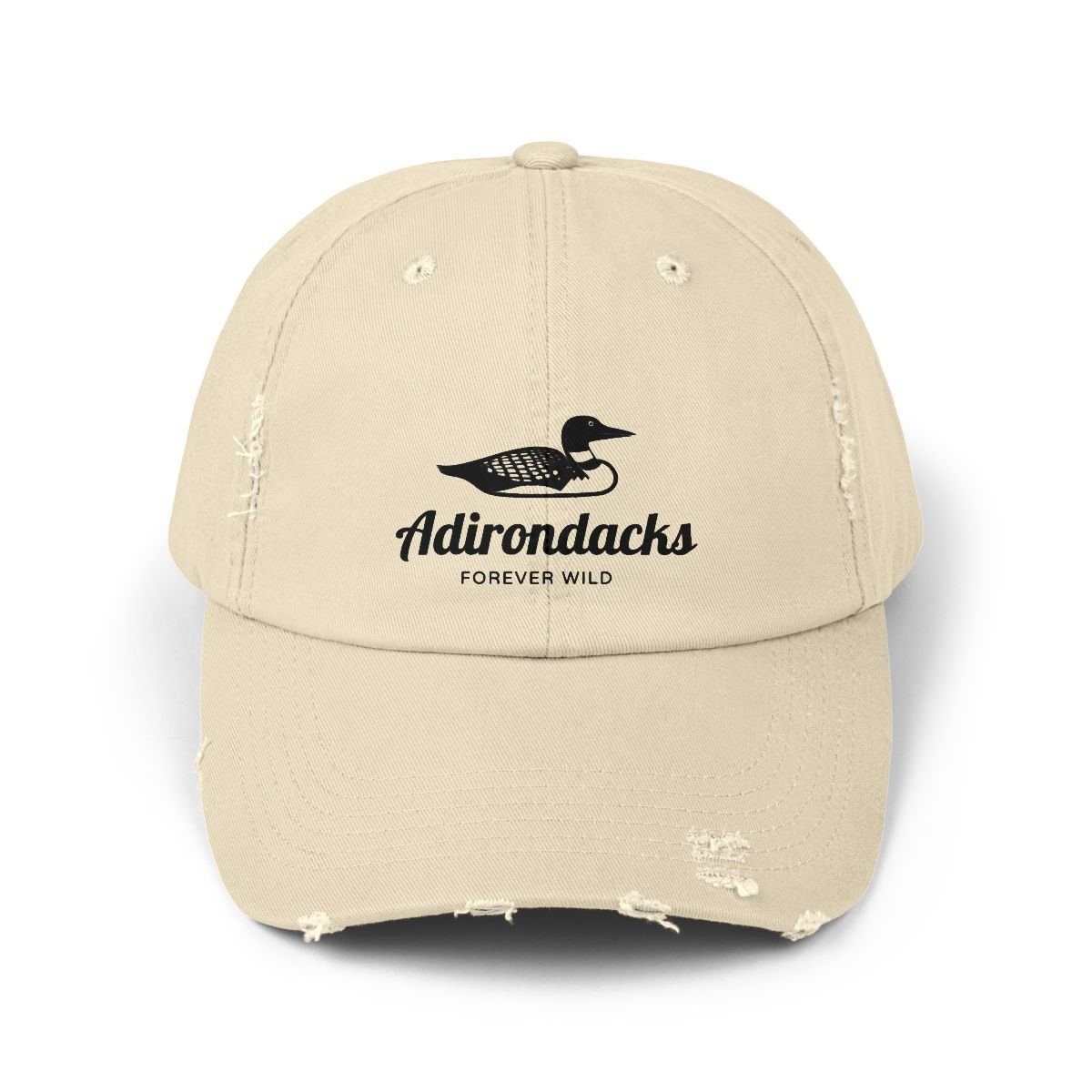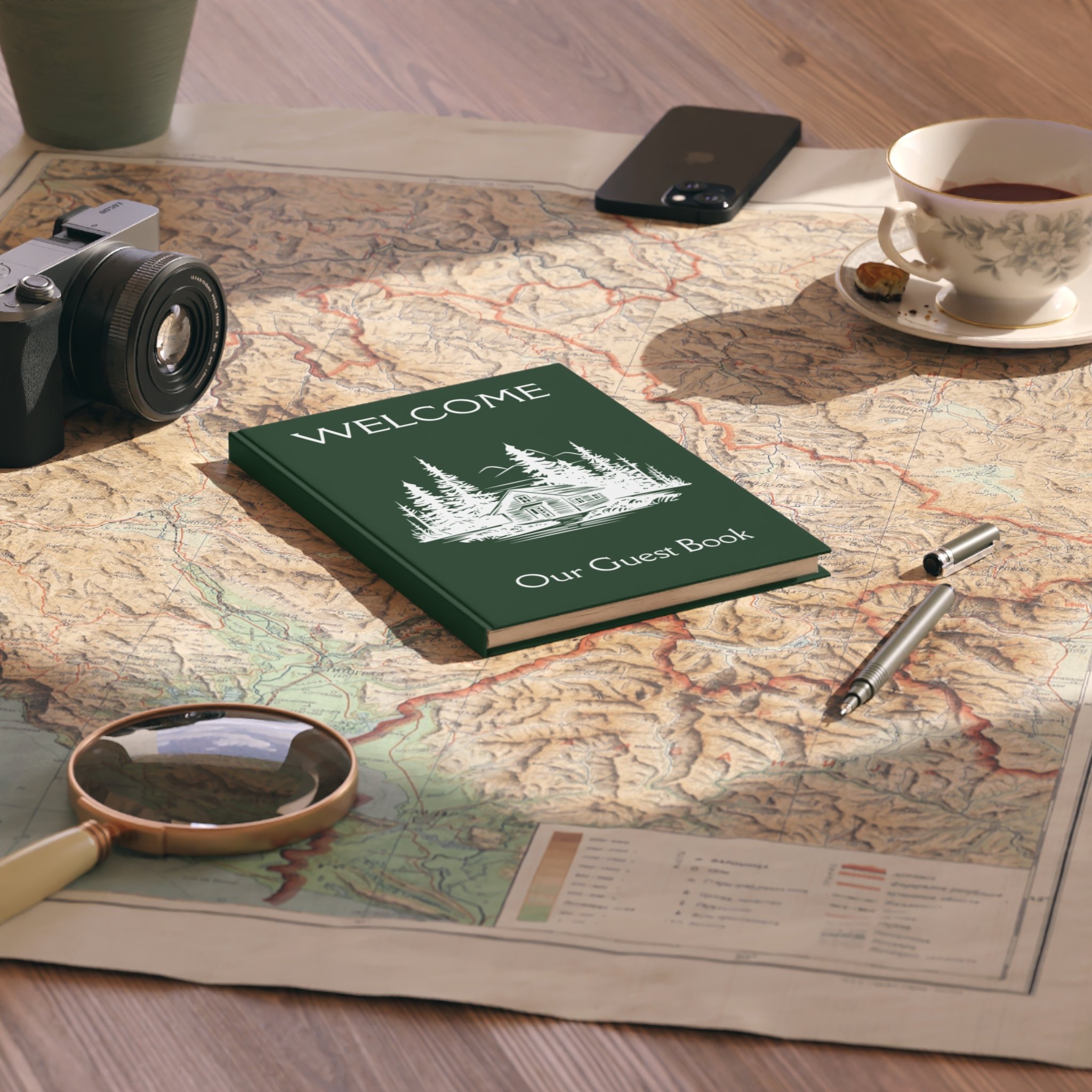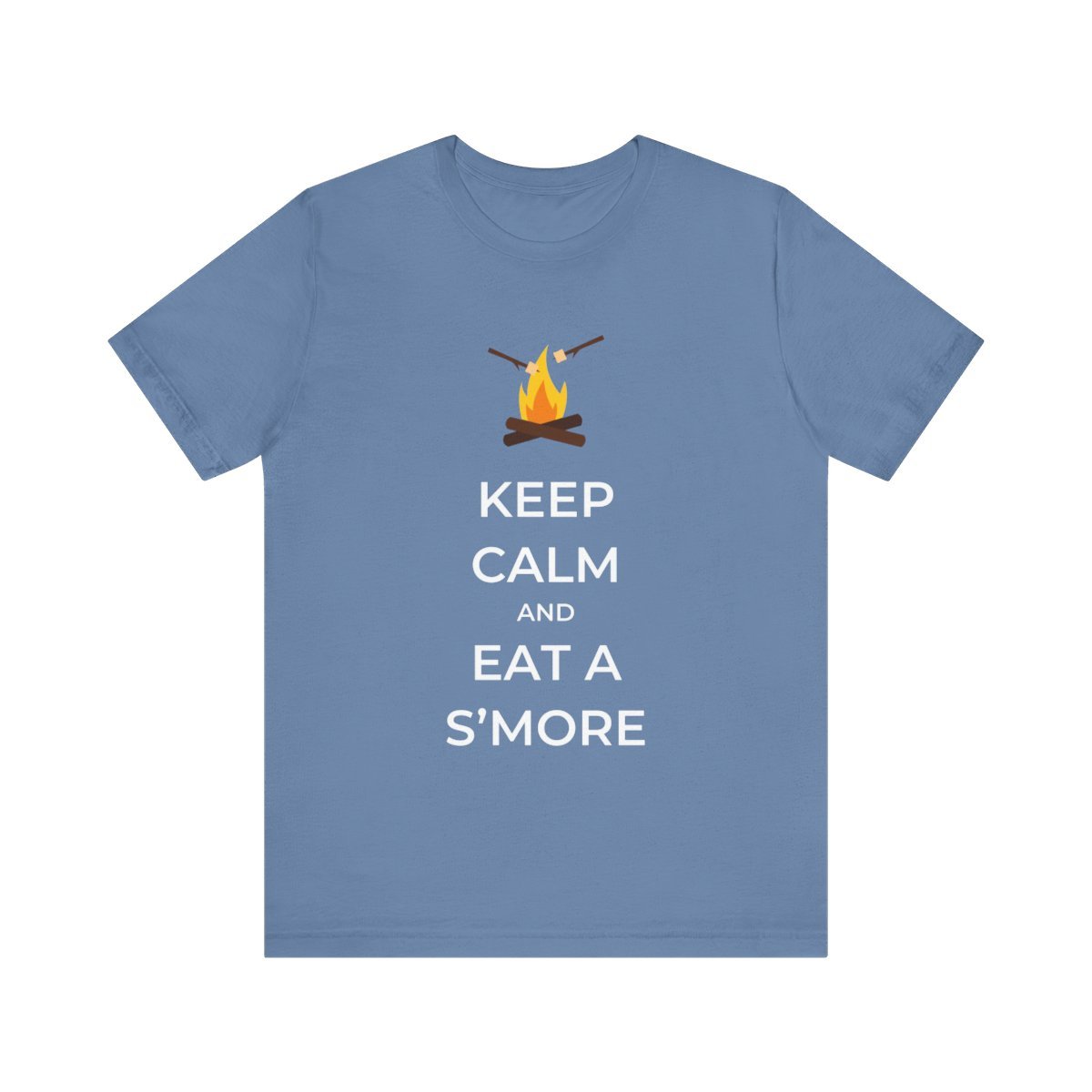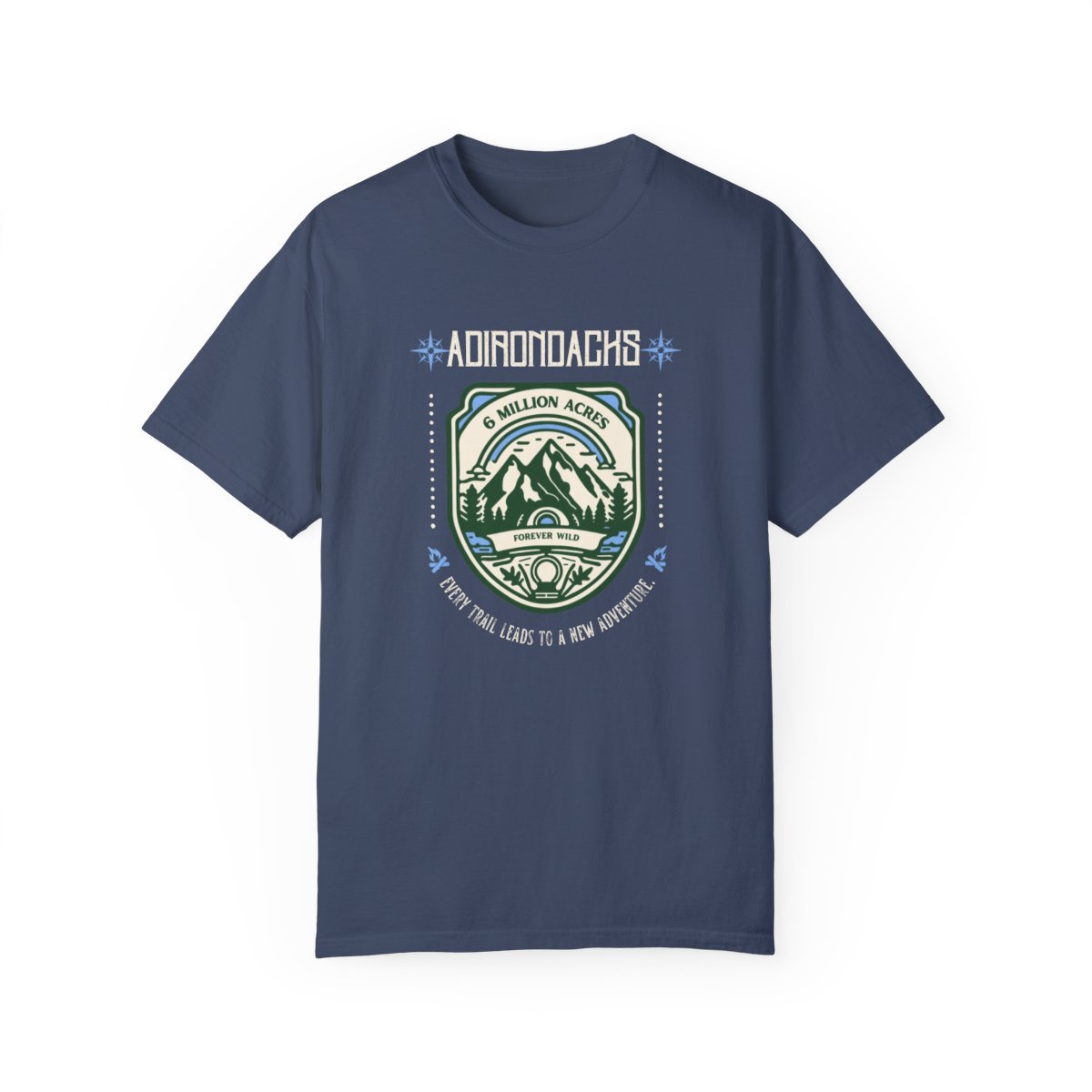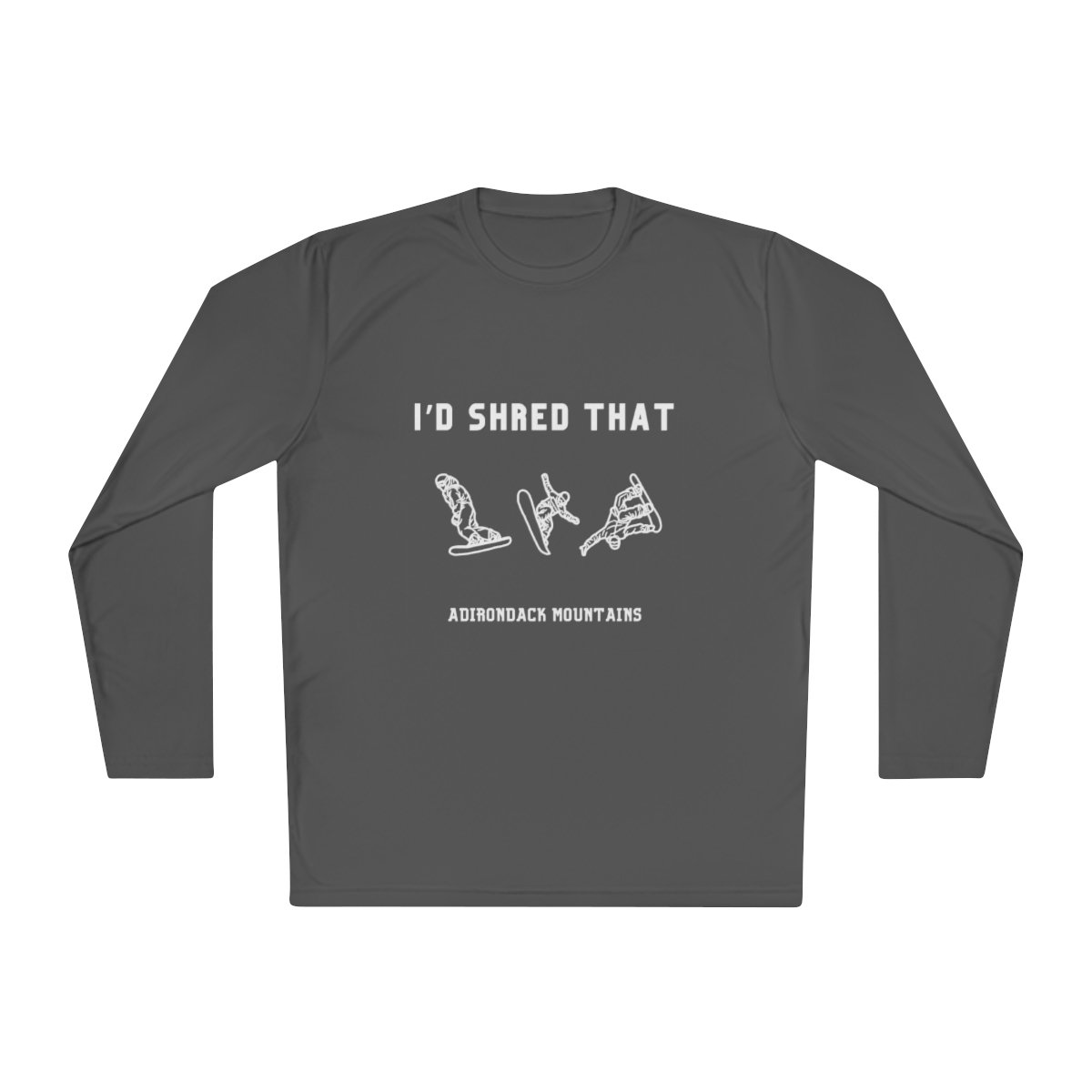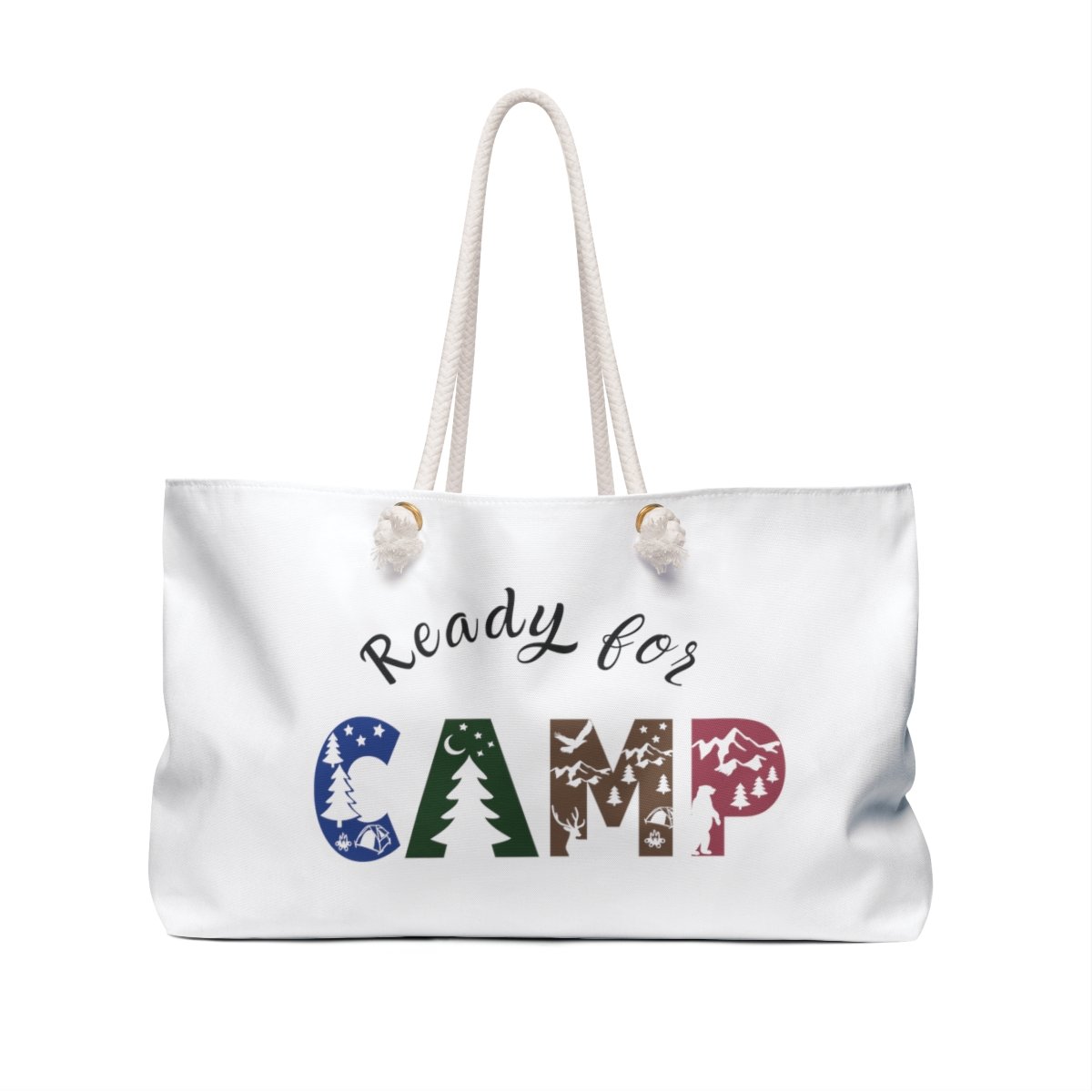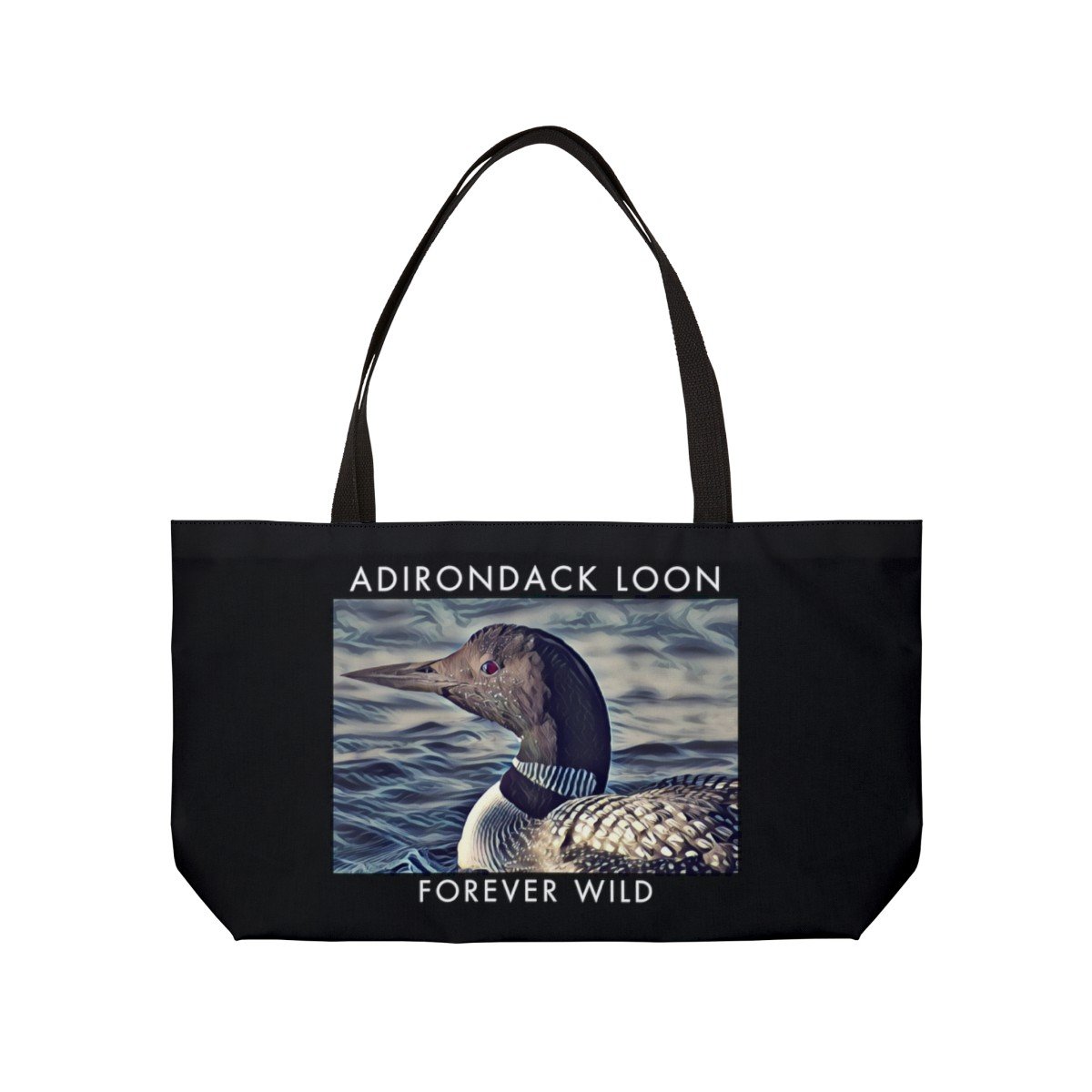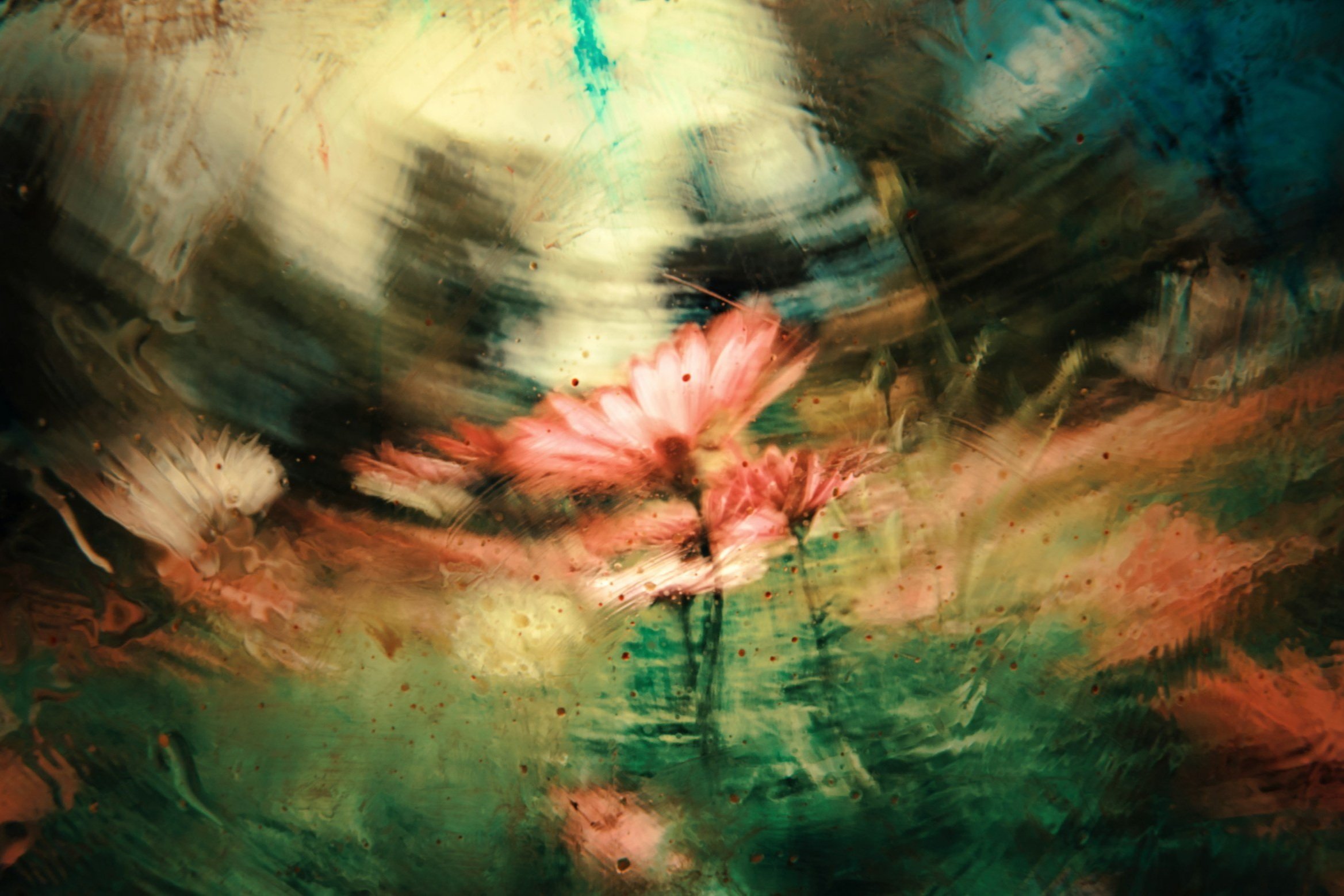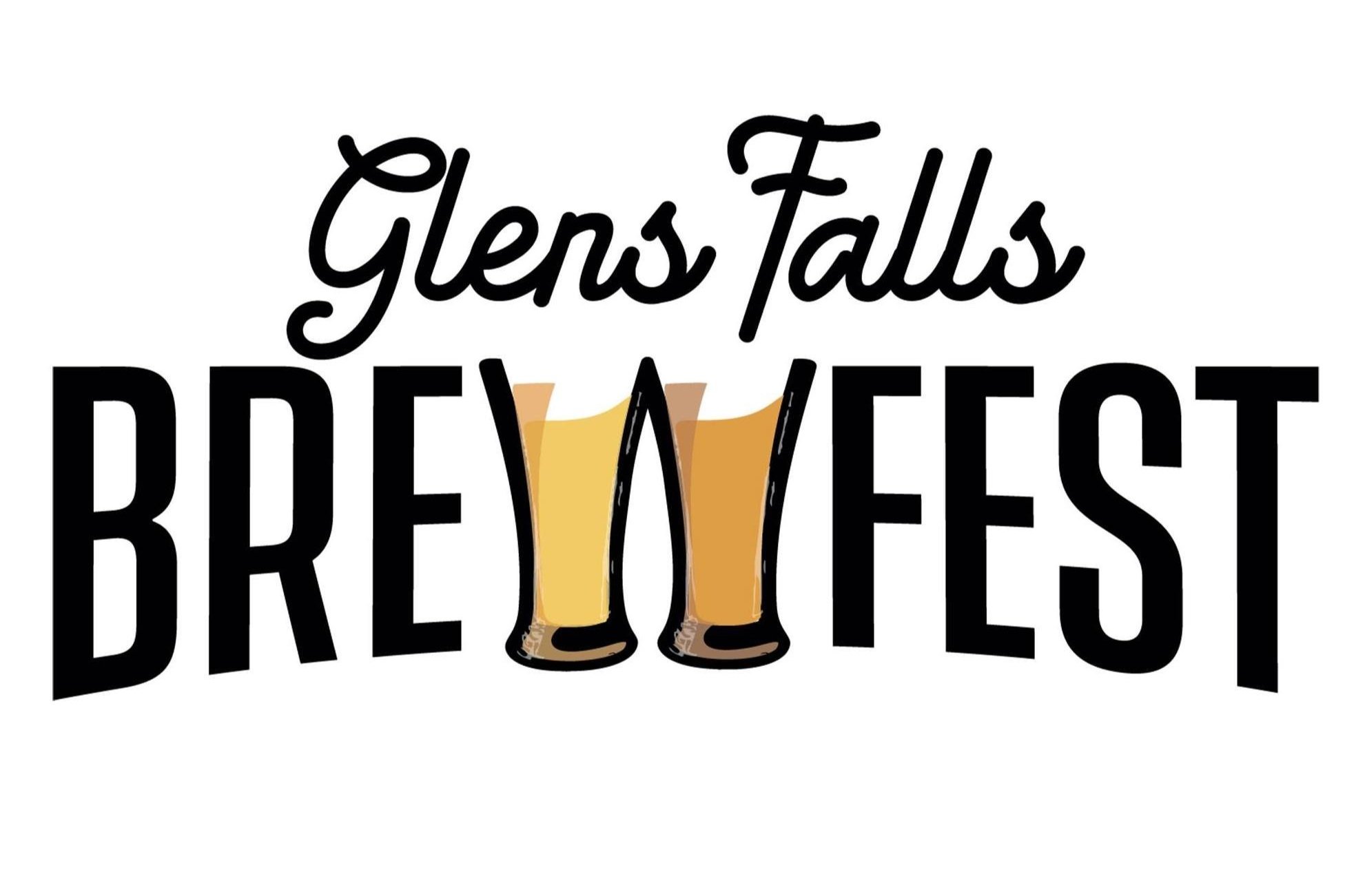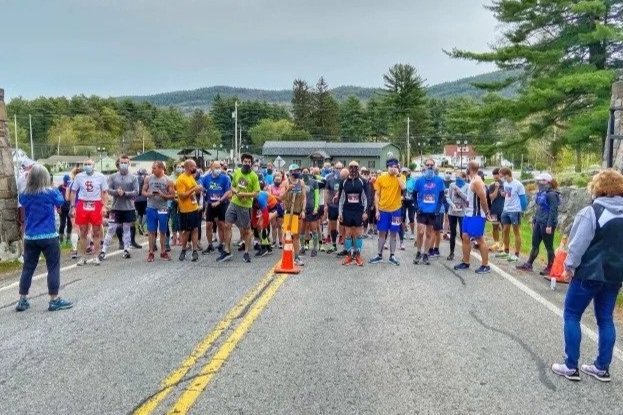Get the Lead Out: A Simple Change to Save Loon Lives
Help eradicate the leading cause of death for adult Adirondack loons.
Loon family on an Adirondack lake.
With more than 3,000 lakes, 8,000 ponds and over 1,500 miles of rivers fed by an estimated 30,000 miles of brooks and streams, the Adirondacks is a breathtaking destination for people who love fishing. Our stunning bodies of water also make the Adirondacks an exceptional habitat for Common Loons.
Like anglers, loons love to catch and eat fish. An adult loon eats approximately two pounds of fish a day. In doing so, though, loons (and other species) accidentally ingest lead tackle when they feed on fish. As a result, lead poisoning is a leading cause of death in loons, eagles, and other species when they eat a fish that has swallowed a lead jig or sinker.
The very real dangers of lead poisoning among loons.
Loons frequently eat small, pea-sized pebbles they find on the bottoms of lakes to help them break down food and aid digestion. In doing so, they may also consume small lost sinkers that fall to lake bottoms. That’s why New York State restricts the sale of lead sinkers that weigh half an ounce or less to protect wildlife who might mistake them for food or pebbles.
A lead jig is visible on a x-ray from a loon that died of lead poisoning. Photo courtesy Adirondack Center for Loon Conservation.
However, according to Denise Silfee, the Adirondack Center for Loon Conservation’s Director of Education & Communications, the most common way that loons ingest lead is when they eat a fish with a broken line and lead tackle in its mouth or stomach. And there is no ban on selling this type of lead tackle in New York State.
Even a small number of deaths from lead poisoning each year adversely affects the Adirondack loon population. Loons, known for their long lifespans, usually don’t breed until they're six years old. Successful pairs typically only produce one or two chicks, and many young loons don't survive their first year.
The National Audubon Society says that loon populations have been declining in the past 20 years, especially in Canada and the northern United States. The species is endangered in Vermont, threatened in New Hampshire and Michigan, and a species of special concern in New York, Connecticut, and Massachusetts.
Go lead-free and save loon lives.
One simple way to help protect loons and other wildlife is using lead-free and non-toxic tackle when fishing. This includes avoiding lead split shot, sinkers, and jig heads. Instead, opt for non-toxic alternatives, which can be found at your local tackle shop.
Fly-fishing in Newcomb. Photo courtesy AdirondackHub.com (ROOST)
If it doesn’t say “lead-free,” it’s probably lead. Making the switch to nontoxic fishing tackle options will help reduce the threat of lead poisoning to all types of birds. There are more and more alternatives, and the cost is coming down.
Anglers use lead because its density enables the tackle to drop through the water quickly. However, not many people realize that some alternatives, like tungsten, have denser physical properties. These non-toxic materials are leading the way in the fishing industry:
Tungsten
Tin
Steel
Brass
Bismuth
As an angler, you have the power to save loon lives by going lead-free. Your actions can make a significant difference in protecting these beautiful birds and other wildlife.
Need more incentive? Participate in the Lead Tackle Buy Back Program.
The Adirondack Loon Conservancy spearheads a regional effort to remove lead tackle from Adirondack waterways and save our beautiful loons and other wildlife.
The Lead Tackle Buy Back Program allows anglers to trade in any lead tackle for a $10 voucher for non-lead tackle at participating locations throughout the Adirondacks.
Bring an ounce or more of your lead fishing tackle to one of our participating fishing tackle retailers (listed below) or to the Adirondack Loon Center in Saranac Lake.
Receive a $10 voucher to purchase new, non-toxic fishing tackle at the outfitter.
The person who turns in the most lead will receive a prize, and others will be entered to win prizes throughout the year.
Find a participating tackle shop near you.
There are at least 30 participating tackle outfitters throughout the Adirondacks, including some of our favorite retailers like Crossroads in Chestertown, Hoss’s Country Corner in Long Lake, Pines Country Store in Indian Lake, and the Hungry Trout Resort Fly Shop in Wilmington.
Or stop by the Loon Center in Saranac Lake to turn in your fishing tackle.
How do you know if your tackle is lead?
As we mentioned earlier, the packaging will have a lead warning. But if you no longer have the packaging, how can you tell? Here are a couple of considerations:
The reality is that most fishing tackle with any density to it, especially older tackle, contains lead, based on current and historic trends in the tackle industry.
Lead is a dense but soft metal that is easy to mold and shape. Use a good pair of pliers to test for malleability.
Lead is gray and dull. Scratching it on paper will leave a gray mark.
Remember, lead is toxic to people, too, when handling (be careful not to touch your mouth or eyes when handling lead) and in the manufacturing process.
A simple acts can make a big difference.
Denise Silfee says the lead buy-back program is having an impact. More retailers are participating in it than ever before.
So far in 2024, anglers have turned in more lead tackle than in all of 2023. The Adirondack Center for Loon Conservation (a registered 501(c)(3) not-for-profit organization) has also received a grant to continue the program through 2025.
In other parts of the U.S., Lindy Fishing Tackle has become the first company to sign the Loons and Lakes Legacy Pledge, vowing to make its entire product line lead-free and loon-friendly within three years.
If you fish, help spread the word among your fellow anglers. Are you participating in a fishing tournament or member of a fish and game club? Contact the ACLC. They conduct outreach at events, make presentations to clubs and organizations and provide more resources for anglers.
Don’t see your preferred tackle shop on the list of retailers participating in the Lead Tackle Buy-Back Program? Tell them to email the ACLC and get on the bandwagon.
The danger of lead poisoning extends beyond individual birds. It can disrupt the delicate balance of the ecosystem, affecting other species and the overall health of our waterways.
